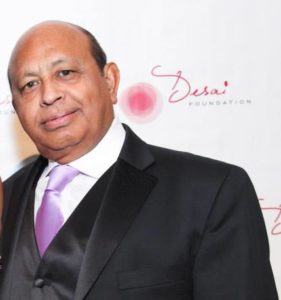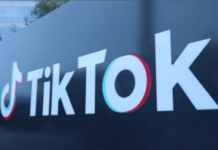By Samir Desai
BOSTON—Seventy-five years ago on May 8, 1945, the Allies declared victory with Germany’s unconditional surrender, and there was jubilation. However, the declared war on the coronavirus will never see such an “end-of-war” celebration.
To understand this, imagine what mountaineers Sir Edmund Hillary and Tenzing Norgay had to endure to reach the top of the world – Mount Everest – 67 years ago this month. They had one rule to follow: ascend, until they reach the summit. But once they reached the top of each mountain, there was another one to climb, or they discovered they needed to descend – the summit is only halfway!
The only way to conquer Everest was to ascend and descend, concurrently. COVID-19 has created mountainous obstacles to conquer, such as healthcare, the economy and its opening, social issues, unemployment, education, and religion. We will require a mountaineer’s approach to conquer each one of these. We cannot freeze and cannot stop, nor can we lose faith, but with patience, we can continue to move slowly and steadily, with measured risks.
What’s known about COVID-19 today is that most of the world is impacted with the virus, which is believed to have started in Wuhan, China. There is absolutely not an ounce of truth to the idea that this virus was man-made or that China used this as some kind of a weapon or conspiracy. This is definitely a historical and unprecedented event which has no precedent.
No time in history has the world seen most of its countries affected at the same time with a pandemic shutting down the whole world’s economy. This happened at a staggering speed, causing economic contraction, and devastating the mental, physical, and financial well-being of every individual, and has tested every fabric of the society and economical structure. It has also pushed our health system to its limits, and killed over 80,000 people here in the United States. However, we should put this into context. An analysis performed by the National Center for Health Statistics on the one million deaths from January through April indicates that 230,000 deaths were caused by heart disease, nearly 200,000 were cancer-related, and 61,000 were due to chronic lower respiratory diseases (Wall Street Journal). However, these COVID-19 deaths are from a single infectious agent, and 80,000 is still a lot of f**king deaths in a very short time.
So what we know today:
- We will have more cases and deaths.
- There is no effective cure, care, or vaccination.
- More than 200 medical treatments, detection tests, and vaccines are in process and some of them will be approved in the coming weeks. This is at unprecedented speed and will spark new debates about the effectiveness of the drugs and side effects they may cause.
- Trying to balance life, death, and livelihood will result in some more COVID-19 cases and cause more deaths, as well as create social and political conflicts.
- Although it may affect older populations more, no one is really immune.
- Unemployment numbers as of May 7th soared to 14.7%, but is suspected to be understated substantially, and estimated at 20%. A decade of growth in employment and economy has now been wiped out in just three months.
- There are studies, but none conclusive, about how COVID-19 viruses spread. However, there are no accepted ways. The most accepted is through air, and hence the need for distancing and masks.
- Sunlight and higher temperatures of the summer can definitely kill the COVID-19 virus. Hence, being outside with social distancing may be healthier.
- The US has lost several weeks of valuable time to plan a response to COVID-19 initially, and even more recently, due to sparring amongst the political parties and federal/state governments. There was no coordinated response in the US like there was in some other countries.
- Each country and every US state seems to approach prevention and treatment in different ways, and that would be great if someone (preferably from the World Health Organization/United Nations) put together some proper guidelines, including best proven practices, vaccines, treatments, etc.
- The curve of detected cases and deaths is flattening in many states here, as well as some countries (e.g. Germany, Spain, Scandinavian countries, South Korea, etc.)
- Zoom and similar technologies have provided us tools to be with family, friends, and business associates. However, we all still strive for human touch and face-to-face connection. This, along with our hunger for outside activities & sports, will put additional pressure on opening up society, business and travel.
- Unlike other crises – such as 9/11 – COVID-19 has not united political parties or the nation. Although, communities and individuals at the social level have united and created some sense of support.
- The mutation period of the COVID-19 virus, the reoccurrence of symptoms in individuals who tested negative or had been cured of the virus, and what parts of the body it will impact are ALL still being debated.
We are, actually, looking at the future in the rear-view mirror, while countries such as South Korea, Germany, New Zealand, Spain, and China are ahead in prevention and control of the virus and the re-opening of the economy. This will hopefully allow us to learn from their actions and results. So, when we endeavor to try to reach various mountains – social, economic, and health – we will have some help in measuring risks & rewards.
During each of these efforts, we will learn lessons and will create new norms. So what will the new normal look like?:
- Masks and social distancing are here to stay for a while.
- We will review all others with some level of trepidation. Does he/she carry the COVID-19 virus? Who have they been in contact with? Where have they been recently? Etc.
- The precautions for employers and employees will become normal standard operation procedures once they re-open and for the foreseeable future.
- Border protection and immigration checks will be tightened with the new procedures.
- Businesses will be slow in hiring employees and will explore other alternatives, such as automation, contract workers, etc.
- The “just in time” inventory concept will be definitely changed to increase the level of inventory, and logistic systems will be diversified geographically.
- Nations will tighten the rules for “Made in This Country” products under the guise of increasing National Security.
- Health systems will be substantially changed. More telemedicine, community health centers, stockpiles for emergency, and spare capacity to handle calamity.
- The privacy of individuals will be compromised under the appearance of protecting the society.
- Most of the world’s population is led by populous, self-absorbing, power-hungry leadership, and coordination effort at the highest level will be hard to come by. Hence, society at the local level will have to rise to the occasion.
However, history has shown that human ingenuity conquers all obstacles (of course, at a cost). Like others in the past, the COVID-19 pandemic will become history that will interest only few. The last major pandemic – the Spanish Flu of 1918 – is a great example.
“We must change the nature of the debate. It is not life vs. the economy, but instead, a balance between life and a healthy society.”
Nevertheless, this will require individuals, nations, and the global society to cooperate on several fronts: health systems, international travel, the strengthening of world bodies so that they can predict, coordinate, and respond to these crises better, and companies will have to act in the interest of employees and customers so it can function quickly and efficiently during and after the crisis. Individuals will have to take this responsibility seriously, and responsibly do what’s necessary – wash their hands, keep social distancing, and most importantly, watch their health and their symptoms.
I also have a very high confidence and trust in the US infrastructure, in society and the government, and the private sector’s ability to solve problems. Historically, that’s what is unique about the US – its spirit to rise above any national crisis and reach the other side of it, stronger and better. Hopefully, the past will prevail this time for all of us.
Each of the mountains our society has to climb has its own unknown obstacles. However, again, if we keep ascending without breaking our spirit and zeal, we will be on the highest peak – and the view may be a different for each one of us than what we expect. However, it would be great if we could slow down, review the terrain, and proceed.
The media is full of extreme views, and everyone seems to be on one side of the issue or the other. Should we open the economy practically and with measured approach, or should we keep closed until detection treatment and vaccinations are in hand? Which businesses should be allowed to open first? Are we testing and approving drugs and treatment too fast or too slow? Who do we consider frontline workers? Which industry or individuals deserve government assistance? What is the value of human life? So on & so on….
It appears we are having a debate between the value of life and the economy. But one thing is abundantly clear: we all need to take deep breaths and create a practical, pragmatic, and implementable approach. We should avoid the negative impacts that inflict our society and our nation due to being kept in lockdown conditions. We must change the nature of the debate. It is not life vs. the economy, but instead, a balance between life and a healthy society.
At the Desai Foundation, we rescheduled or canceled some 108 events in India and the US. We kept all employees part and full-time employed and fully paid. We have also taken a variety of actions in response to COVID-19. Of course, we are all preparing and planning for the future, with a new reality, for all of our activities and events.
My personal belief is this: we do not need to overreact to danger. Instead, we must take very measured precautions, and move on with life just like the mountaineer’s approach to reaching one peak after another.
(Mr. Desai is founder and CFO of The Desai Foundation. A philanthropist and an entrepreneur, he founded System Resources Corporation in 1985, serving the US federal government, and guided the firm through 15 years of rapid, steady and profitable growth and then sold it to NYSE Company in 1999. During this period, he earned many awards and recognition, including SBA Prime Contractor of the Year (Region I), Entrepreneurial Success Award from Commonwealth of Massachusetts, six-time finalist for Ernst & Young Entrepreneur of the Year Award (New England), and twice ranked in Inc. Magazine List of Fastest Growing Companies. In 1999, Mr. Desai founded The Desai Foundation for his charitable activities in both the United States and India.)














